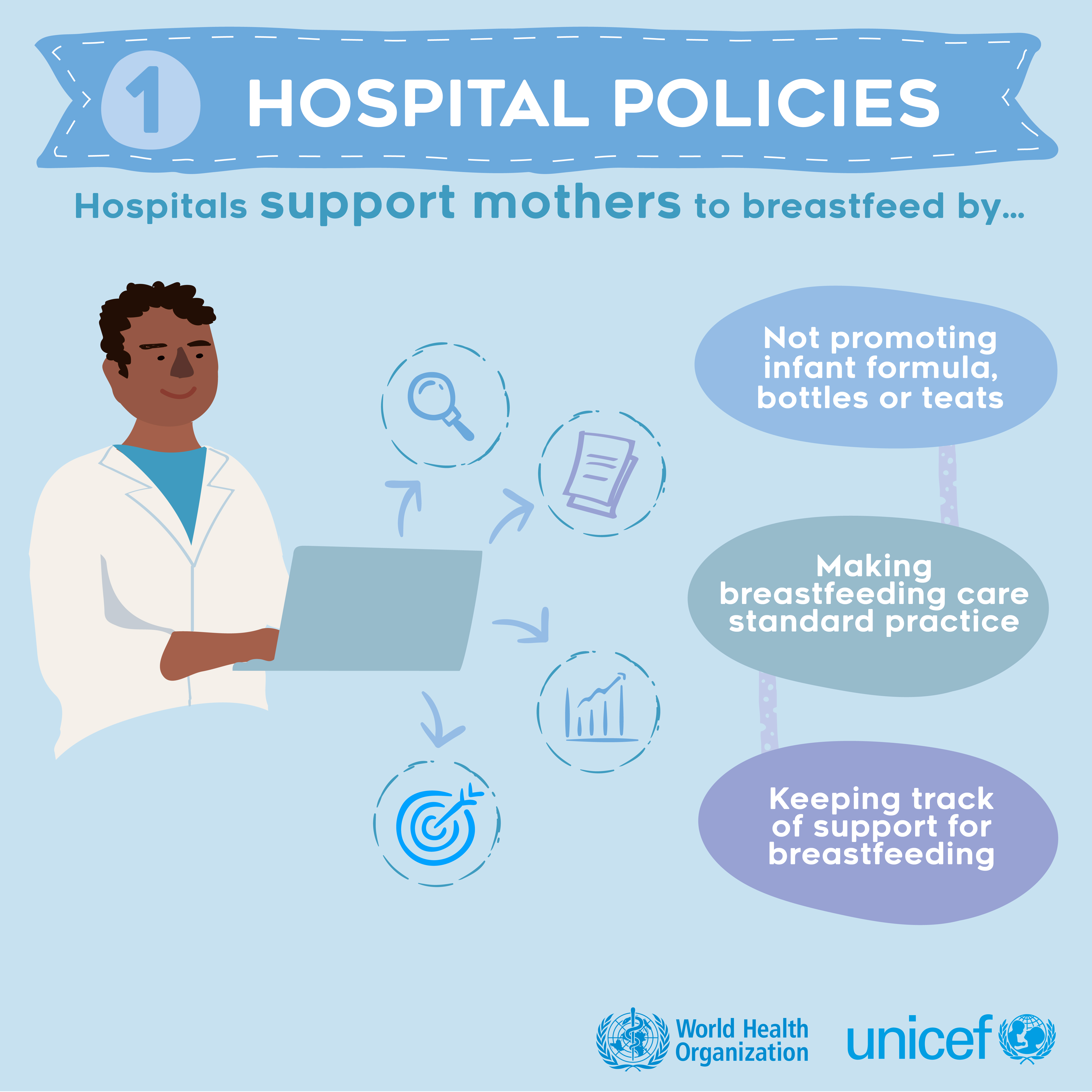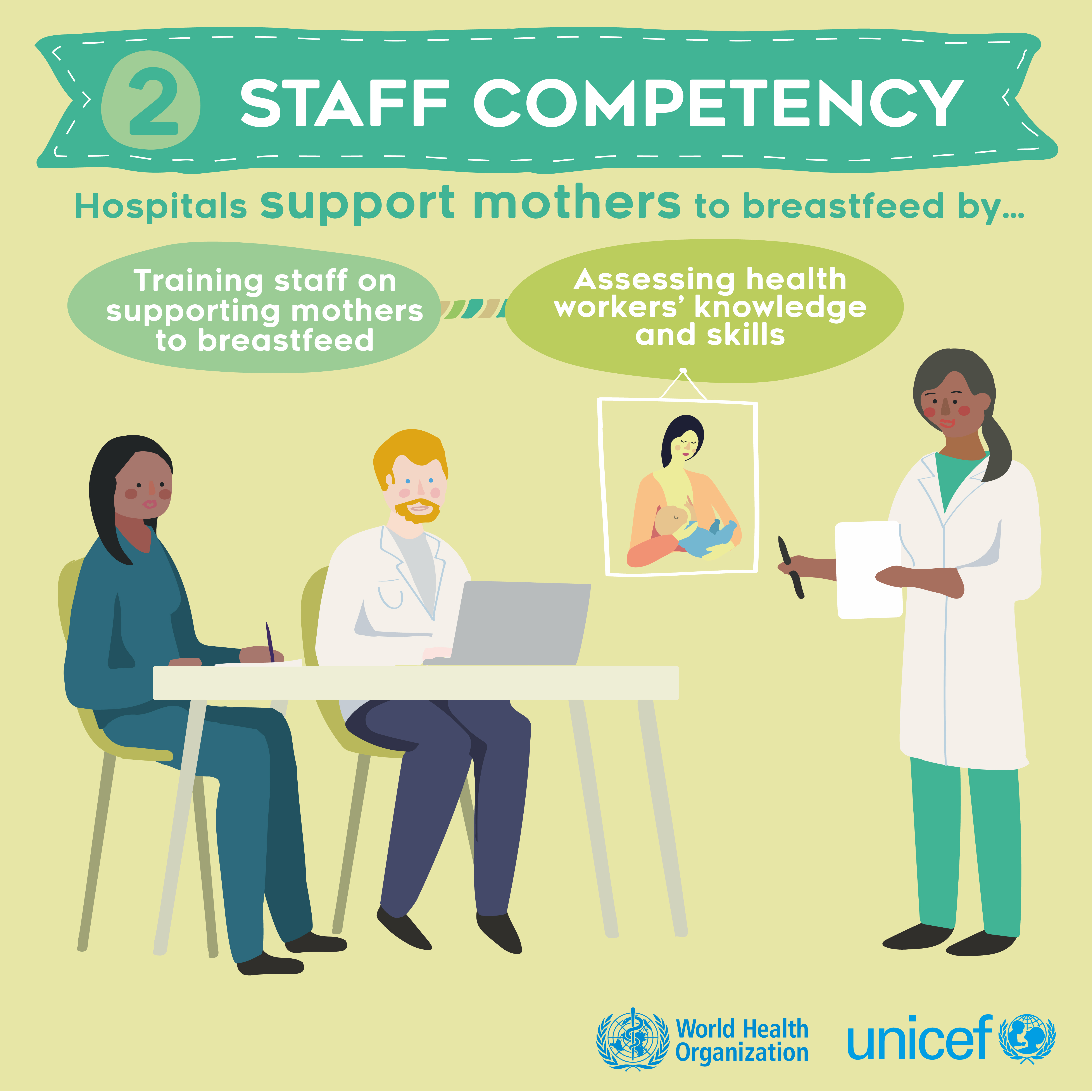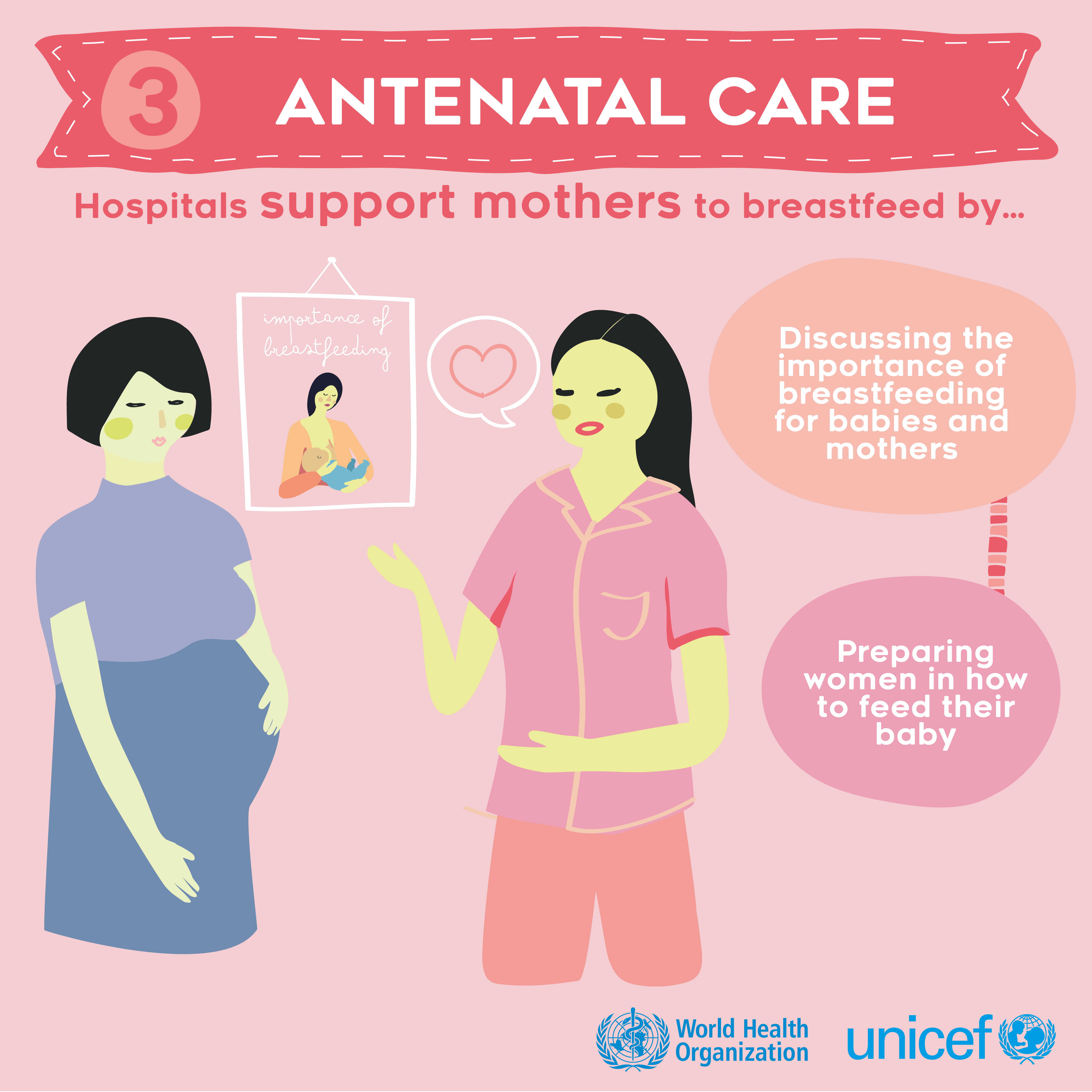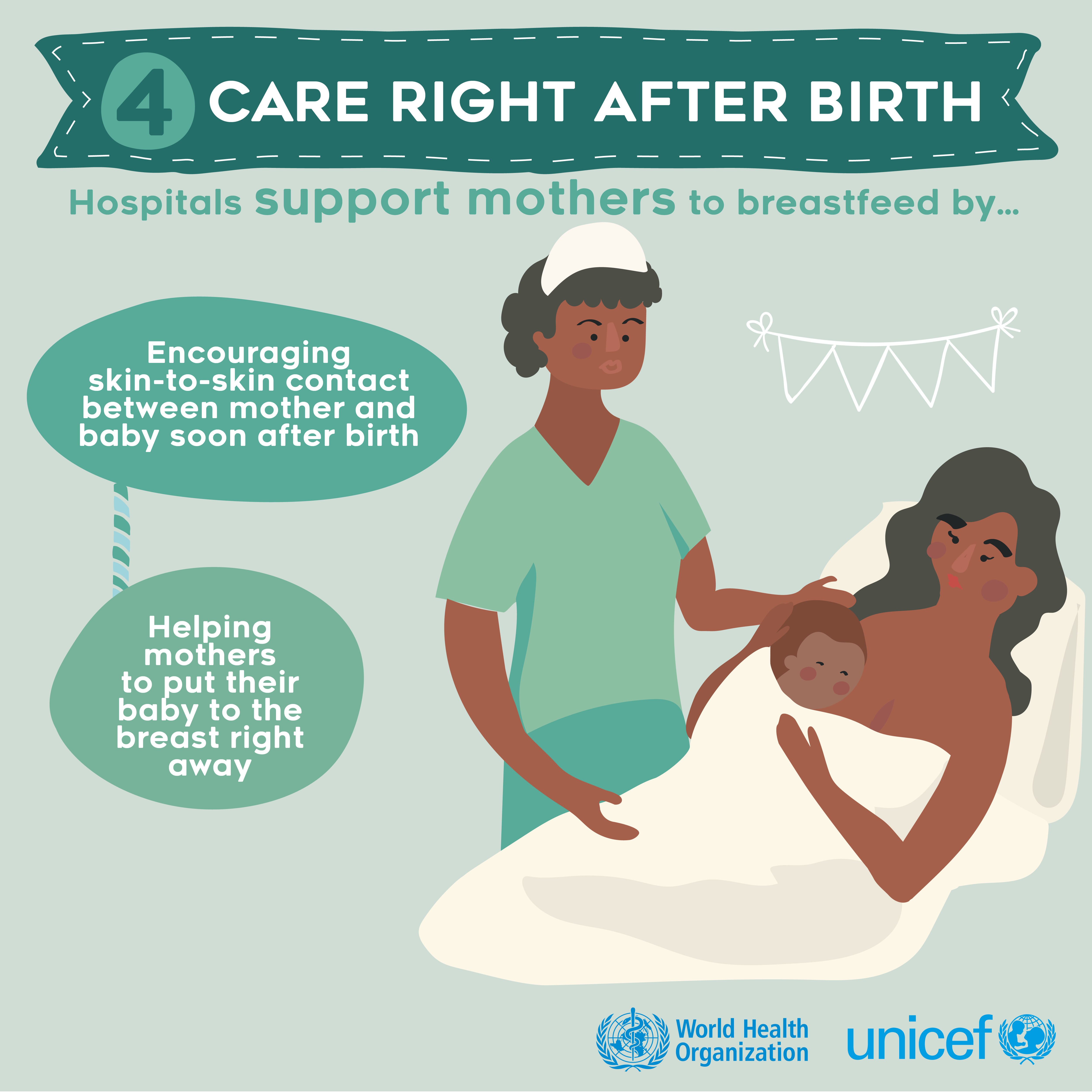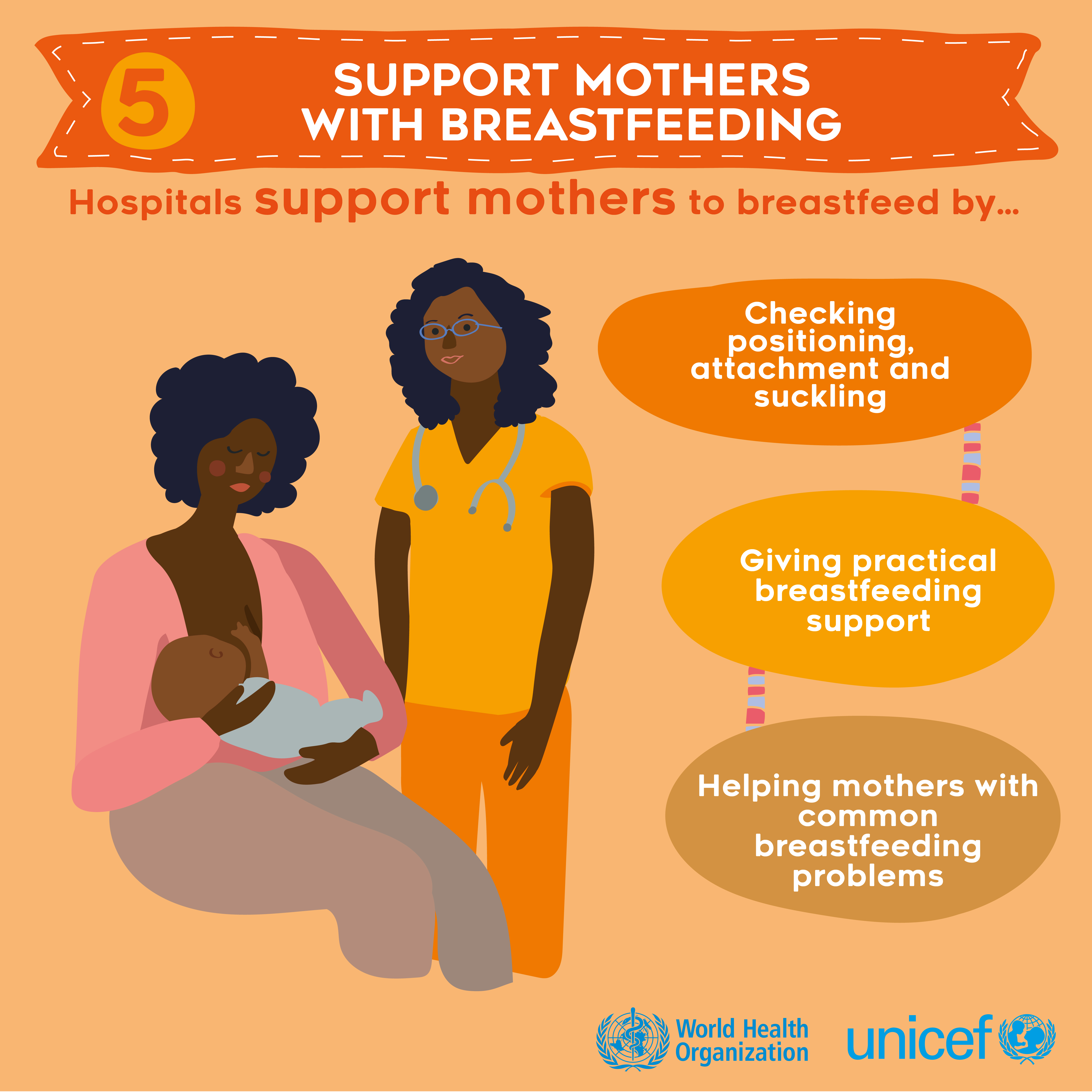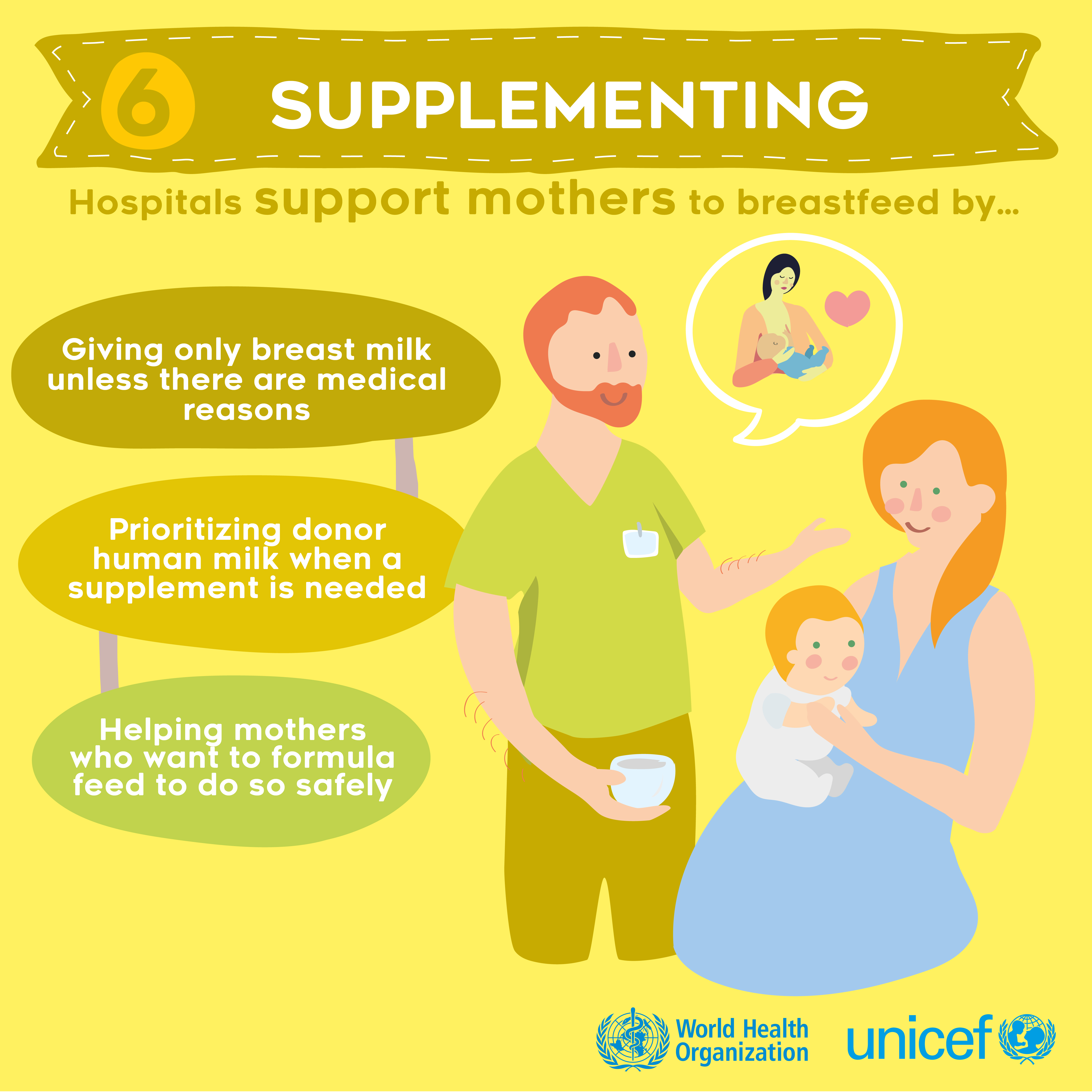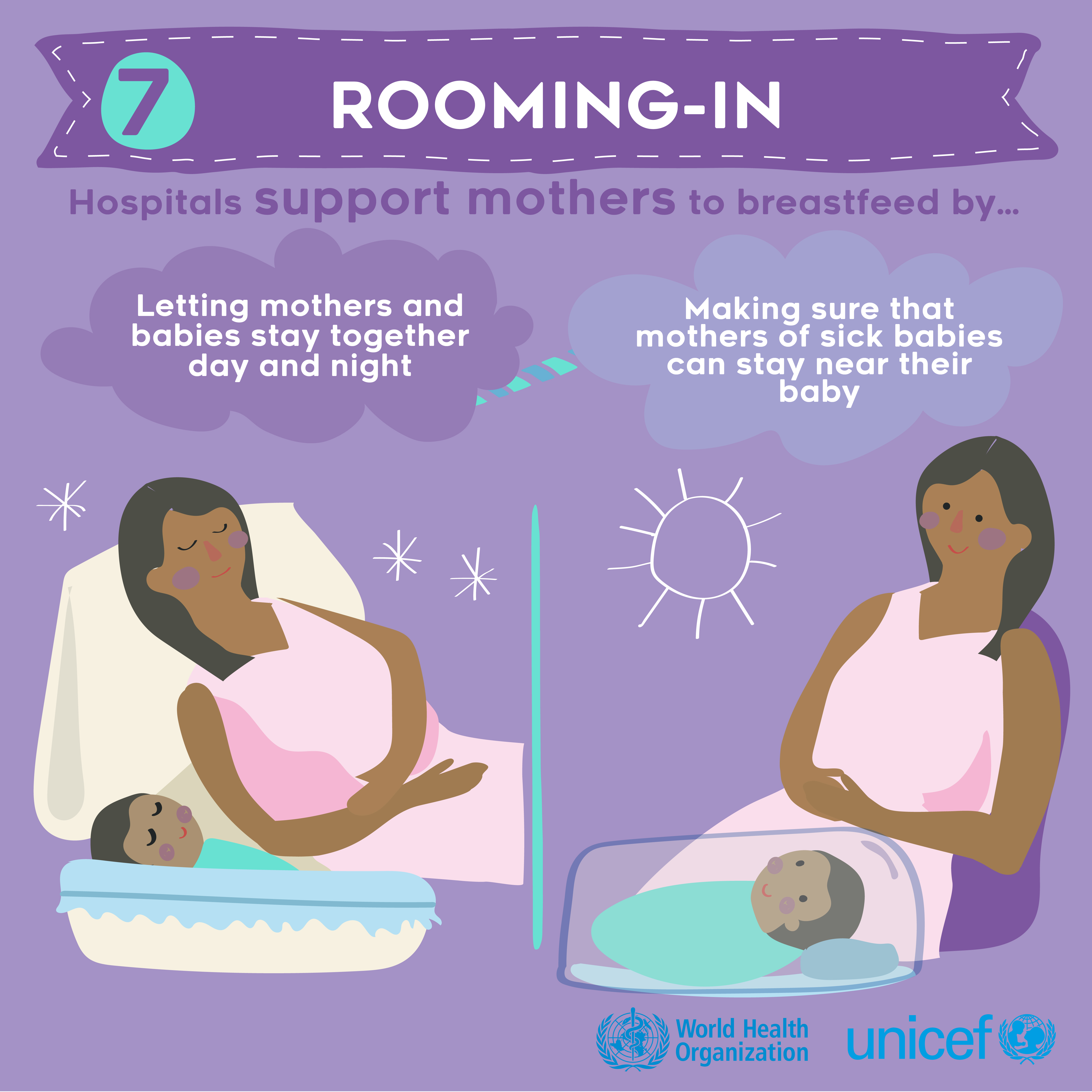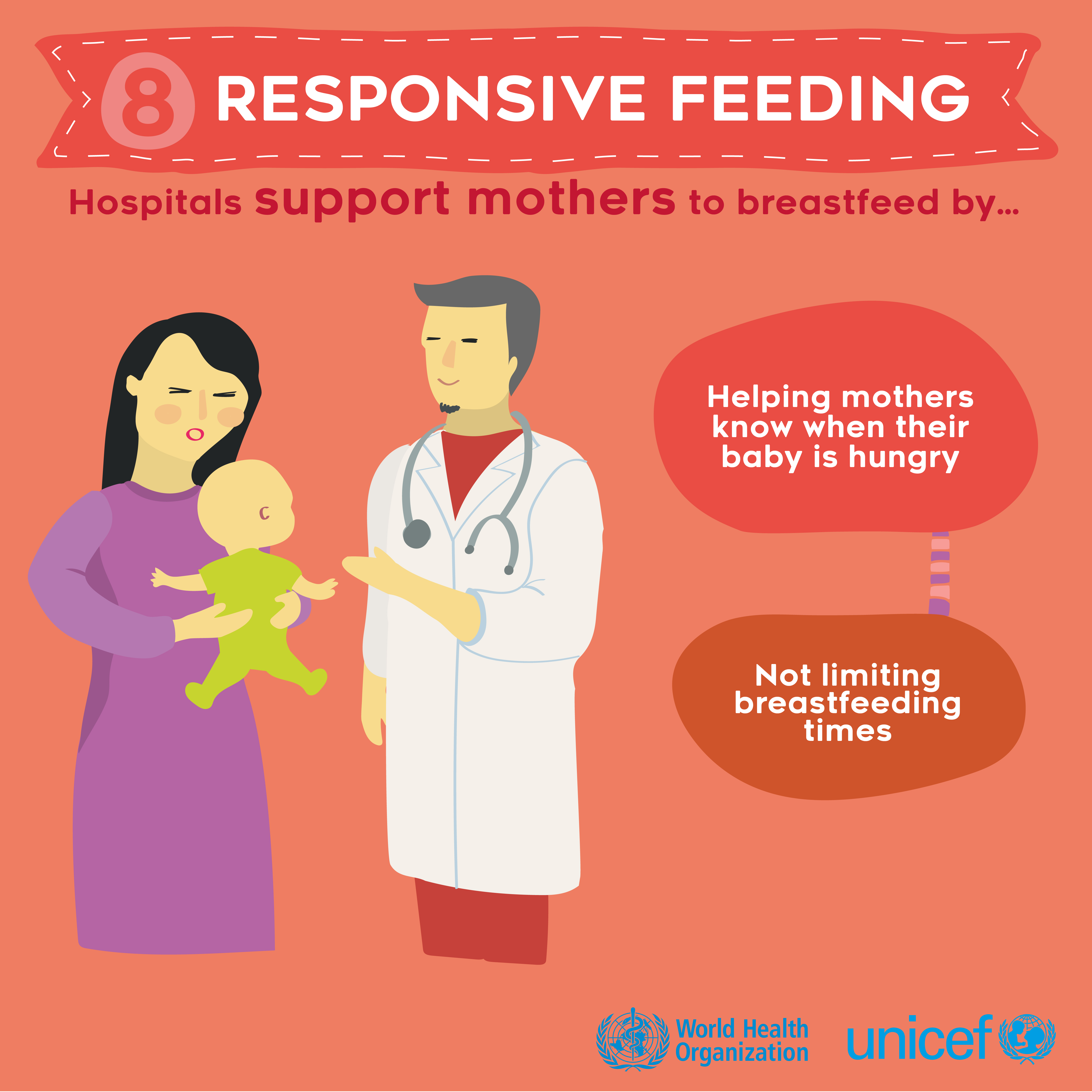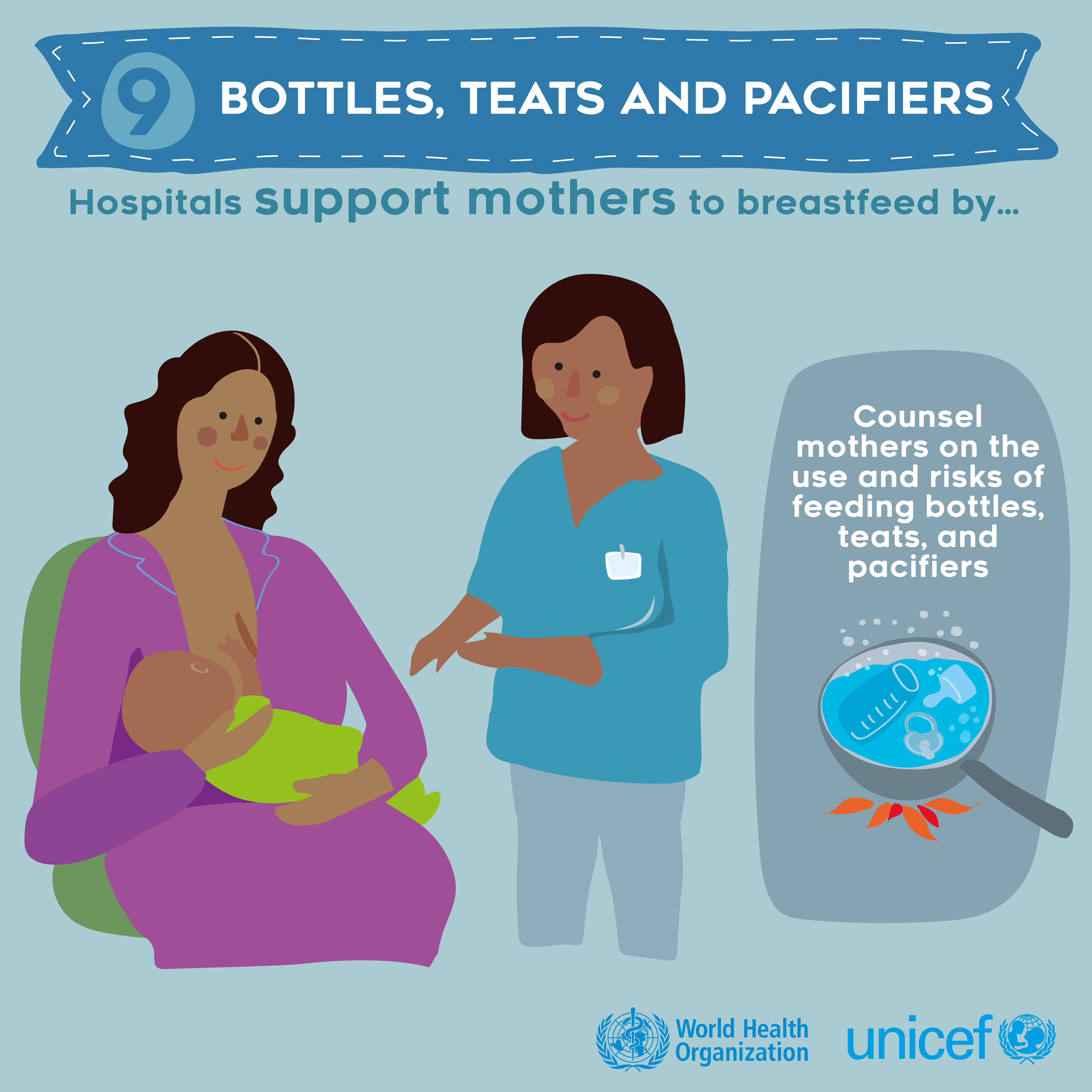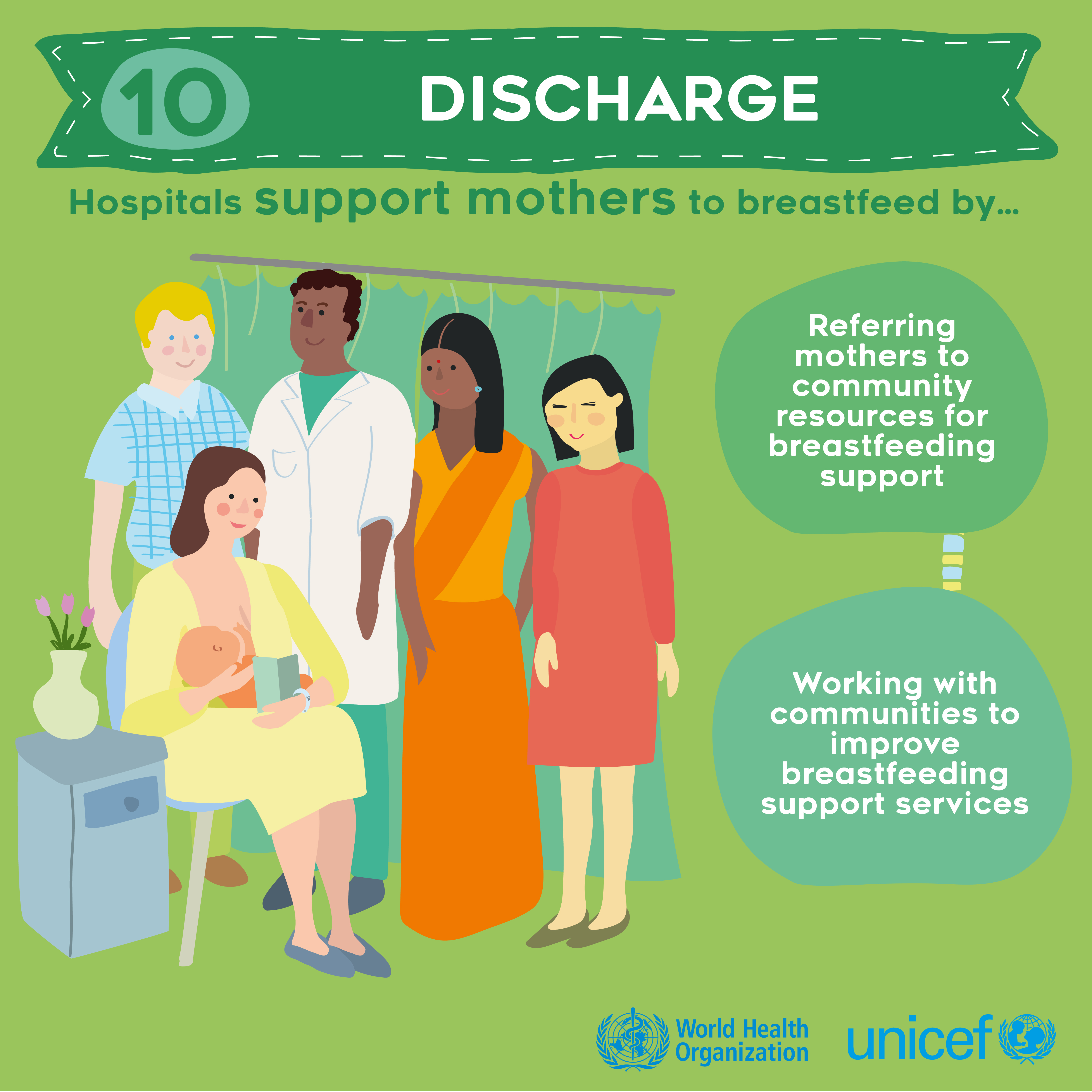WHAT ARE THE TEN STEPS TO SUCCESSFUL BREASTFEEDING?
The World Health Organization (WHO) in a conjoint effort with United Nations International Children’s Emergency Fund (UNICEF) developed the “Ten Steps to Successful Breastfeeding” in 1992, which became the backbone of the Baby Friendly Hospital Initiative (BFHI). The Ten Steps summarize a package of policies and procedures that facilities providing maternity and newborn services should implement to support breastfeeding. In 2018, WHO revised the Ten Steps based on the 2017 guideline on protecting, promoting and supporting breastfeeding in facilities that provide maternity and newborn services.
WHAT DOES THE GUIDANCE OUTLINE?
WHO has called upon all facilities providing maternity and newborn services worldwide to implement the Ten Steps. The implementation guidance for BFHI focuses on integrating the program across healthcare systems to facilitate universal coverage and ensure sustainability over time. The guidance outlines nine key national responsibilities to scale up implementation of the Ten Steps.
Critical management procedures:
1a. Comply fully with the International Code of Marketing of Breast-milk Substitutes and relevant World Health Assembly resolutions.
1b. Have a written infant feeding policy that is routinely communicated to staff and parents.
1c. Establish ongoing monitoring and data-management systems.
2. Ensure that staff have sufficient knowledge, competence and skills to support breastfeeding.
Key clinical practices:
3. Discuss the importance and management of breastfeeding with pregnant women and their families.
4. Facilitate immediate and uninterrupted skin-to-skin contact and support mothers to initiate breastfeeding as soon as possible after birth.
5. Support mothers to initiate and maintain breastfeeding and manage common difficulties.
6. Do not provide breastfed newborns any food or fluids other than breast milk, unless medically indicated.
7. Enable mothers and their infants to remain together and to practise rooming-in 24 hours a day.
8. Support mothers to recognize and respond to their infants’ cues for feeding.
9. Counsel mothers on the use and risks of feeding bottles, teats and pacifiers.
10. Coordinate discharge so that parents and their infants have timely access to ongoing support and care.
ARE THE TEN STEPS EFFECTIVE?
There is substantial evidence that implementing the Ten Steps significantly improves breastfeeding rates. A systematic review of 58 studies on maternity and newborn care published in 2016 demonstrated clearly that adherence to the Ten Steps impacts early initiation of breastfeeding immediately after birth, exclusive breastfeeding and total duration of breastfeeding.
Here are a few papers that support the effectiveness of the Ten Steps and Baby-Friendly Hospital Initiative:
- Addressing Racial Inequities in Breastfeeding in the Southern United States Anne Merewood, Kimarie Bugg, Laura Burnham, et al. Pediatrics 2019; 143 (2): e20181897.
- The Impact in the United States of the Baby-Friendly Hospital Initiative on Early Infant Health and Breastfeeding Outcomes Allison C. Munn, Susan D. Newman, Martina Mueller, Shannon M. Phillips, and Sarah N. Taylor. Breastfeed Med 2016; 11(5): 222-230.
- Evaluating the impact of the Baby-Friendly Hospital Initiative on breast-feeding rates: a multi-state analysis Summer S. Hawkins, Ariel D. Stern, Christopher F. Baum, and Matthew W. Gillman. Public Health Nutrition 2015; 18(2): 189-197.
- Effect of Maternity-Care Practices on Breastfeeding Ann M. DiGirolamo, Laurence M. Grummer-Strawn, and Sara B. Fein. Pediatrics 2008; 122: S43-S49.
- Promotion of Breastfeeding Intervention Trial (PROBIT): A Randomized Trial in the Republic of Belarus Michael S. Kramer, Beverley Chalmers, Ellen D. Hodnett, et al. JAMA. 2001; 285(4):413-420.
- Baby-Friendly Hospital Initiative Improves Breastfeeding Initiation Rates in a US Hospital Setting Barbara L. Philipp, Anne Merewood, Lisa W. Miller, Neetu Chawla, Melissa M. Murphy-Smith, Jenifer S. Gomes, Sabrina Cimo, John T. Cook. Pediatrics 2001; 108 (3): 677-681.
- Guidance: protecting, promoting and supporting breastfeeding: the baby-friendly hospital initiative for small, sick and preterm newborns World Health Organization (2020)
- Guidance: protecting, promoting and supporting breastfeeding in facilities providing maternity and newborn services: the revised Baby-friendly Hospital initiative: 2018 implementation guidance: frequently asked questions World Health Organization (2020)
- Guidance: protecting, promoting, and supporting breastfeeding in facilities providing maternity and newborn services: the revised Baby-friendly Hospital Initiative 2018 World Health Organization (2018)
- Guideline: protecting, promoting and supporting breastfeeding in facilities providing maternity and newborn services World Health Organization (2017)
WHAT RESOURCES ARE AVAILABLE?
There are many Ten Steps resources available to assist hospitals that would like to improve their maternity practices on their own or are working towards Baby-Friendly designation. We’ve listed some below.
